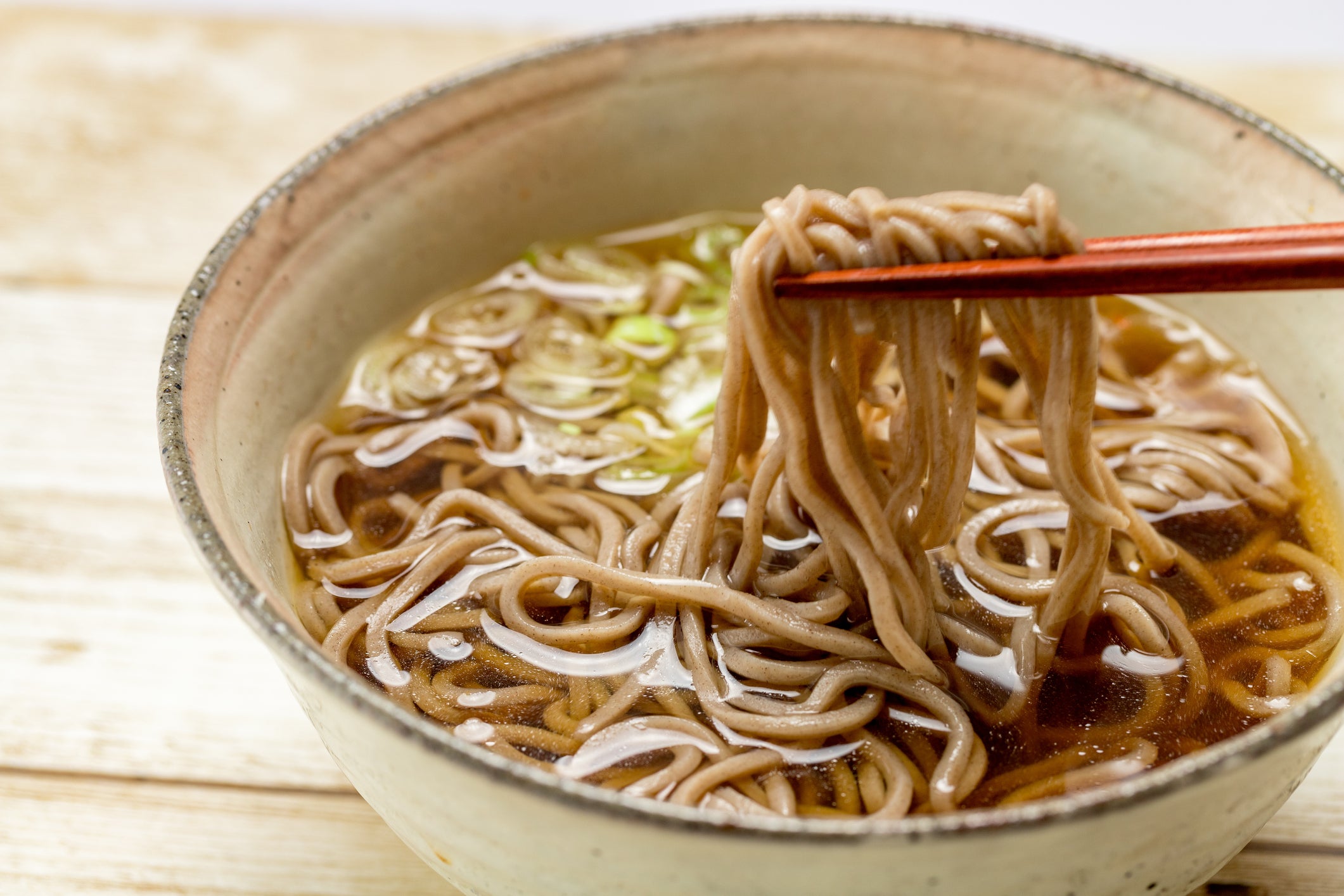Try these Ottolenghi ginger soba noodles for the perfect veggie comfort food
Yotam Ottolenghi thinks all food is comfort food, but noodles in particular have an ability to nurture, sustain and, yes, comfort us

Comfort food is hard to pin down.
It’s as slippery as noodles, with any attempt to characterise it often countered by an exception.
Cambridge Dictionary defines it as “the type of food that people eat when they are sad or worried, often sweet food or food that people ate as children.”
I connect with the nostalgia part and love sweet things, but I tend to reject the idea that comfort food must fill a sad- or worried-shaped hole.
To me, all food is comfort food: Do we ever set out to make food that discomforts? It’s true that the past year has seen a focus on food’s particular ability to provide solace amid so much uncertainty. Slippery though noodles can be, then, it’s interesting to ponder why noodles — so simple, so basic, so everyday — have such an ability to nurture, sustain and, indeed, comfort.
Is comfort food about ease? In Thai cooking, it’s less about how food makes people feel than about its ease: dishes that are quick to make, untaxing, gentle on the day. And you can find this in any cuisine, of course. These are the pasta and noodle dishes, the daals and soups: things that come to life with little more than boiling water, hot stock or broth.
Is it to do with texture? Is it the feeling of noodles as we eat them? Does that explain the appeal of smooth soups or hummus? Or the lure of rice — light on one hand, reassuringly starchy on the other?

Or is it defined by food group? Do carbohydrates comfort more than others? Is that what makes noodles — and pasta, potatoes and bread — so enticing? Does the same hold true of fat and dairy?
Or is it how (and where) we eat it? From a bowl, with chopsticks, by hand? Is the link between a bowl of hot soup and a tub of cold ice cream that both are eaten with a spoon, cross-legged on the sofa? Is that why some people love to eat in bed?
Or is it to do with memory? If one kid’s happy place is a baked potato with melted cheese, and the next kid’s is lentils and rice or chicken soup, does that make the whole notion of defining comfort food nonsense?
For all the ways to define comfort food, the dictionary definition is the one I’d push back on. Why is comfort food associated with sadness or some kind of lack or guilt? Why is the tub of ice cream we fall into on a Friday night seen as a substitute for the real hugs we’ve all been missing? Can’t we just love it because it’s delicious, easy and there?
I don’t like Champagne (no guilt!), but I do love this quote from Lily Bollinger, who is with Bollinger Champagnes: “I drink Champagne when I’m happy and when I’m sad.”
“Sometimes I drink it when I’m alone,” she said. “When I have company, I consider it obligatory. I trifle with it if I’m not hungry and drink it when I am. Otherwise, I never touch it — unless I’m thirsty.”
I feel the same way about food! I eat when I’m happy and when I’m sad. Sometimes I eat when I’m alone. When I have company, it’s a must. I snack when I’m peckish and feast when I have an appetite. Otherwise, I can go without — unless I’m hungry.
Soba With Ginger Broth and Crunchy Ginger
Makes: 4 servings
Total time: 45 minutes
Ingredients
For the Toppings:
6 tablespoons olive oil
1 1/2 teaspoons red-pepper (chili) flakes
1/2 teaspoon sweet paprika
30g piece fresh ginger, peeled and finely chopped (about 3 tablespoons)
1 shallot, peeled and finely chopped
20g panko breadcrumbs
1 tablespoon white and black sesame seeds
Salt
For the Broth:
500ml vegetable stock (or chicken stock)
65g fresh ginger peeled and roughly chopped
1 shallot, peeled and roughly chopped
1 small head of garlic, halved crosswise
For the Noodles:
200 grams dried soba
2 tablespoons fresh lime juice
2 tablespoons soy sauce
10g roughly chopped fresh coriander
Method
1. First, prepare the toppings: Add 4 tablespoons oil to a large frying pan and heat gently over medium. Place the red-pepper (chilli) flakes and paprika into a small heatproof bowl. Once the oil is quite hot but not smoking, pour it over the spices. Set aside to infuse as you make the ginger crumbs.
2. Add the remaining 2 tablespoons oil to the same skillet and heat over medium-high. Once hot, turn the heat back down to medium and add the ginger and shallot. Cook for 10 to 15 minutes, stirring often, until nicely browned and starting to crisp. Add the panko, sesame seeds and 1/4 teaspoon salt, and cook for 4 to 6 minutes more, stirring often, until nicely toasted. Transfer to a bowl and set aside.
3. Meanwhile, make the broth: Add all the broth ingredients plus 200ml water and 1 teaspoon salt to a medium lidded saucepan, and bring to a simmer over medium-high heat. Cover once simmering, turn the heat down to low and cook for 25 minutes. Drain through a sieve set over a bowl, discarding the solids, and return the broth to the saucepan along with another 300ml hot water. Keep warm over low heat until ready to serve.
4. Prepare the noodles: Boil them in a pot or saucepan according to package instructions, or for 5 minutes in plenty of boiling water. Drain well and run under cold water to stop the cooking. Return the drained noodles to the pot or saucepan and toss with the lime juice, soy sauce and cilantro (coriander).
5. Divide the warm broth across four bowls, then use a fork to twist and gather the noodles and nest them artfully in the bowls. Top with a spoonful of the ginger crumbs and the red-pepper (chilli) oil, serving the remaining alongside.
© The New York Times
Join our commenting forum
Join thought-provoking conversations, follow other Independent readers and see their replies
Comments
Bookmark popover
Removed from bookmarks